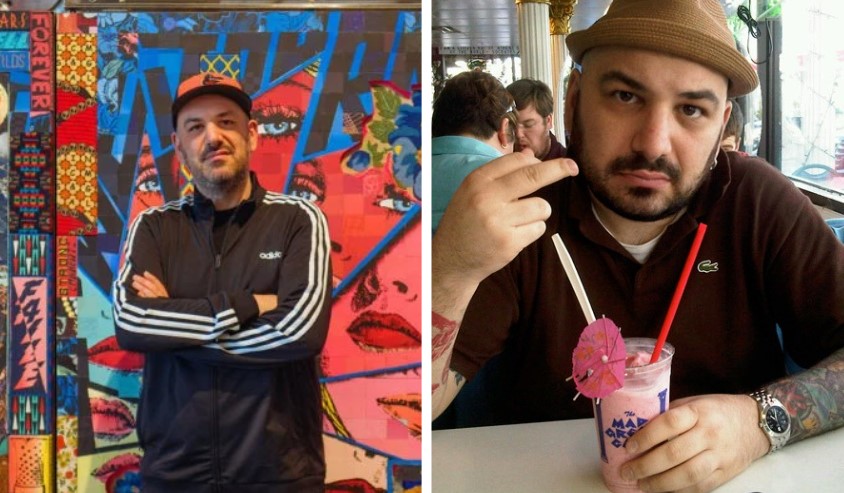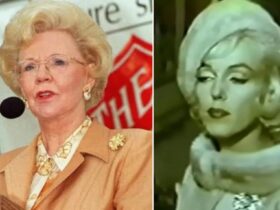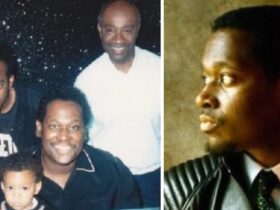Roger Gastman is a renowned American art dealer, curator, and filmmaker celebrated for his pioneering role in bringing graffiti and street art from back-alley walls to the spotlight of major museums. Known for his deep understanding of urban culture and its social significance, Roger Gastman has spent more than two decades shaping how the world perceives contemporary street art and its rebellious spirit.
Quick Bio
| Full Name | Roger Gastman |
|---|---|
| Profession | Art Dealer, Curator, Filmmaker, Publisher |
| Date of Birth | Not publicly disclosed (1970s approx.) |
| Age (approx.) | Mid-40s to Early 50s |
| Birthplace | Bethesda, Maryland, United States |
| Nationality | American |
| Occupation Highlights | Founder of Beyond the Streets, Co-producer of Exit Through the Gift Shop |
| Known For | Promoting graffiti and street art culture |
| Height (approx.) | 5 ft 10 in (1.78 m) |
| Marital Status | Married (Private Life Kept Low-Key) |
| Notable Projects | Art in the Streets, Beyond the Streets Exhibitions, The Legend of Cool “Disco” Dan |
Early Life and Background

Born and raised in Bethesda, Maryland, Roger Gastman grew up surrounded by a mix of suburban calm and the urban pulse of nearby Washington D.C. This environment exposed him early to graffiti tags, punk rock posters, and the raw aesthetics of street culture. As a teenager, he developed a fascination for visual expression outside the mainstream, observing how graffiti acted as a voice for those who felt unseen.
His family encouraged creativity, and from a young age, he experimented with photography, design, and printing. By the time he reached high school, Gastman was already collecting images of local graffiti and interviewing artists. These early experiences laid the foundation for his lifelong mission—to document, protect, and celebrate the evolution of street art.
Date of Birth and Age
While Roger Gastman has kept his exact birth date private, he is believed to have been born in the late 1970s, placing him in his mid-forties to early fifties today. His age reflects decades of experience, growth, and leadership within the global art community. The cultural landscape of the 1980s and 1990s—dominated by hip-hop, skateboarding, and graffiti—shaped his worldview and fueled his creative ambitions.
Physical Appearance and Personality

Roger Gastman presents himself as both creative and approachable, often sporting casual attire that mirrors his connection to the street art scene. He typically appears with a relaxed demeanor, neatly trimmed beard, and an effortless style that speaks to his authenticity.
His personality is described as driven, passionate, and curious. Colleagues admire his ability to balance business acumen with artistic sensibility. Whether speaking at exhibitions or directing a film, Gastman radiates enthusiasm for storytelling and community building—key elements that define his legacy.
Education and Early Influences
Roger Gastman has never been one to follow a conventional academic route. Instead, his education came through real-world experiences in the graffiti and publishing scenes. During his youth, he connected with local artists, muralists, and musicians who opened his eyes to alternative forms of expression.
Inspired by figures like Henry Chalfant and Martha Cooper, whose documentation of graffiti culture became iconic, Gastman began compiling his own archives. His early mentors were not traditional teachers but creators who saw art in rebellion. This hands-on learning shaped his curatorial vision, teaching him that art’s truest power lies in its authenticity.
Career Beginnings in Graffiti and Publishing
The story of Roger Gastman’s career began with a photocopier, a typewriter, and a deep love for underground creativity. In 1995, he launched While You Were Sleeping, an independent magazine dedicated to graffiti, hip-hop, and alternative culture. The publication captured the spirit of the streets long before social media existed, becoming a voice for marginalized artists.
His ability to spot talent and connect communities soon gained him recognition. The magazine’s success led to other ventures, including books and collaborations with graffiti legends. Through these early publishing efforts, Gastman carved out a niche as a cultural historian, preserving the voices of artists who often remained anonymous.
Rise as a Curator and Art Dealer
Transitioning from publishing to curation, Roger Gastman became instrumental in legitimizing street art within established art institutions. He co-curated Art in the Streets at the Museum of Contemporary Art (MOCA) in Los Angeles in 2011—one of the first major museum exhibitions dedicated to graffiti and street culture.
Later, he founded Beyond the Streets, an expansive art platform that evolved into a touring exhibition, showcasing works from artists like Shepard Fairey, REVOK, Lady Pink, and Futura. The exhibitions celebrated graffiti’s journey from illicit walls to respected gallery spaces while maintaining its rebellious roots.
As an art dealer, Gastman emphasizes collaboration over commercialization. He bridges the gap between street and gallery art, ensuring that the authenticity of each artist remains intact.
Film and Documentary Work
Beyond curation, Roger Gastman has made a profound mark in the world of film and documentaries. He co-produced the Academy Award-nominated Exit Through the Gift Shop (2010) alongside the elusive artist Banksy. The film blurred the line between art and authenticity, gaining global acclaim for its witty exploration of fame and creativity.
Gastman also produced and directed The Legend of Cool “Disco” Dan (2012), a documentary focusing on the Washington D.C. graffiti pioneer. This project highlighted Gastman’s dedication to preserving street art history and its cultural roots. Other works, such as Wall Writers: Graffiti in Its Innocence, further demonstrate his passion for storytelling and documenting the evolution of graffiti from the 1960s onward.
Major Achievements and Recognitions
Throughout his career, Roger Gastman has received widespread acclaim for transforming public perceptions of graffiti. His exhibitions have toured major cities including Los Angeles, New York, and London, drawing hundreds of thousands of visitors.
He has collaborated with influential artists, cultural institutions, and brands to create experiences that merge art, history, and activism. His publishing house has released several respected art books, including The History of American Graffiti, which remains a vital resource for students and enthusiasts alike.
These accomplishments have made Roger Gastman one of the most significant cultural curators of his generation.
Art Philosophy and Curatorial Vision
At the heart of Roger Gastman’s philosophy lies a simple belief: art belongs to everyone. He sees graffiti not as vandalism but as an authentic form of self-expression that deserves the same respect as fine art.
His curatorial approach blends education with experience. Each project he leads—whether an exhibition or film—tells a story about rebellion, community, and identity. Gastman believes that by presenting street art in formal spaces, he isn’t sanitizing it but honoring its cultural roots and giving it the visibility it deserves.
Personal Life and Relationships

While Roger Gastman is highly visible in the art scene, he keeps his personal life private. He is reportedly married and values time spent with family away from the public eye. Friends describe him as loyal, humble, and deeply connected to his community.
Professionally, his network includes long-term collaborators such as Shepard Fairey, Martha Cooper, and Banksy. These relationships are built on mutual respect and a shared mission to keep the history of graffiti alive for future generations.
Legacy and Influence on Contemporary Art
The legacy of Roger Gastman extends far beyond galleries. He has built bridges between artists, collectors, and audiences, ensuring that graffiti and street art receive the historical recognition they deserve. His projects continue to inspire younger curators to explore unconventional forms of expression.
Through Beyond the Streets and his film work, Gastman has become a cultural archivist—preserving the stories of artists who shaped urban aesthetics. His commitment to authenticity and creativity ensures that his impact on contemporary art will last for decades to come.
Conclusion
Roger Gastman has transformed the perception of street art from misunderstood rebellion to respected cultural movement. From his early days documenting graffiti in Maryland to his international exhibitions, he remains a passionate advocate for creative freedom. His work as a curator, dealer, and filmmaker not only celebrates artists but also challenges society to redefine what art truly means.
Today, Roger Gastman stands as one of the most influential figures in modern American art—an innovator whose vision continues to inspire new generations of creators and art lovers worldwide.
FAQs
Who is Roger Gastman?
Roger Gastman is an American art dealer, curator, filmmaker, and publisher known for promoting graffiti and street art on a global scale.
Where is Roger Gastman from?
He was born and raised in Bethesda, Maryland, United States, and later became active in the Los Angeles and New York art scenes.
What is Roger Gastman known for?
He is best known for founding Beyond the Streets, curating Art in the Streets, and co-producing Exit Through the Gift Shop with Banksy.
How did Roger Gastman start his career?
He began his career by creating the underground magazine While You Were Sleeping, which focused on graffiti and urban culture.
What is Beyond the Streets?
Beyond the Streets is a large-scale exhibition founded by Roger Gastman that showcases the evolution of graffiti and street art.
Has Roger Gastman worked on any films?
Yes, he co-produced Exit Through the Gift Shop and directed documentaries like The Legend of Cool “Disco” Dan and Wall Writers.
Is Roger Gastman an artist himself?
While not primarily a graffiti artist, he is deeply involved in the art world as a curator, historian, and advocate for urban art.
What is Roger Gastman’s art philosophy?
He believes graffiti and street art are powerful forms of self-expression that deserve the same respect as fine art.
Does Roger Gastman have a family?
He keeps his personal and family life private, focusing mainly on his creative and curatorial projects.
Why is Roger Gastman important in contemporary art?
He played a key role in bringing street art into mainstream museums and documenting its rich cultural history.
For More Updates Visit: Biomagazine












Leave a Reply